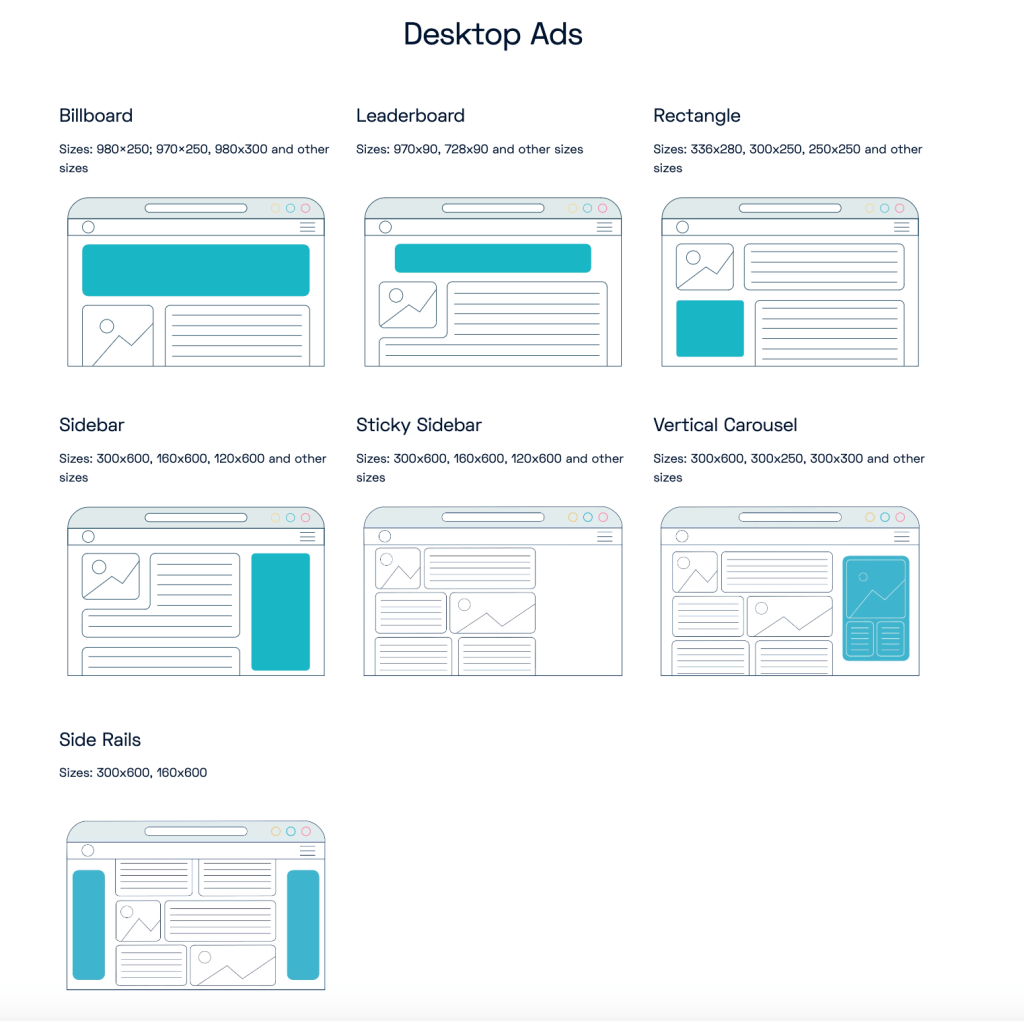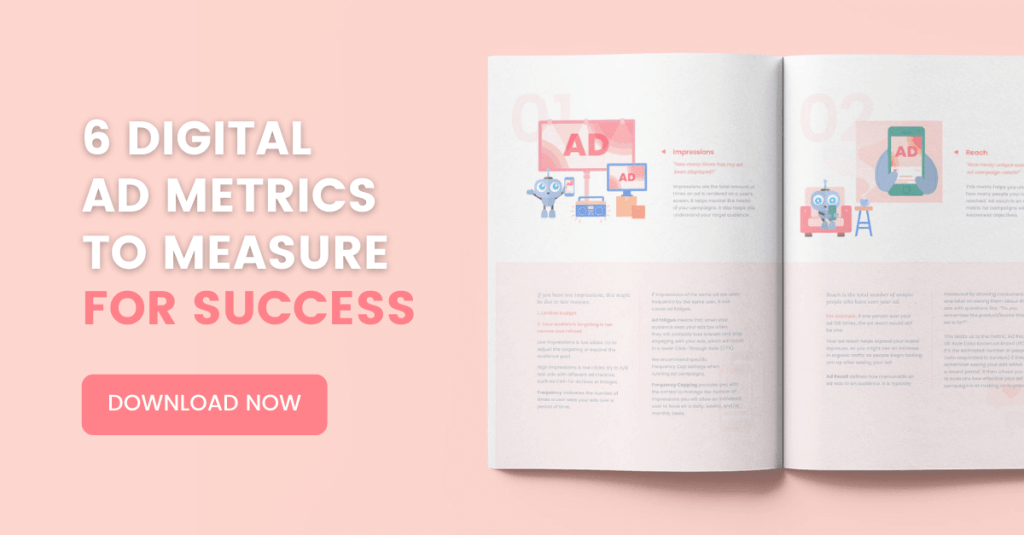Did you know that more than more than 80% of Google’s revenue comes from advertising?
Google is a prime example of how digital advertising generates revenue. Many publishers today rely on ad revenue to provide them with funds to reinvest in their business, as well as to generate profit.
Some publishers, especially up and coming enterprises, struggle with knowing how to increase ad revenue. If you’re a member of this category, read our comprehensive guide and learn what you need to do to increase ad revenue for your digital outlet, step by step.
Before launching a revenue-driven ad campaign, it’s critical that publishers understand what they’re getting into. The realm of ad revenue is multi-faceted, and each facet must be carefully considered in order to achieve maximum return.
Let’s tackle the three most important elements of ad revenue: types of ad revenue models, the factors that impact ad revenue, and the importance of your target audience. Knowing these will give you a strong foundation as you progress to the next two steps in our guide.
Types of ad revenue models for publishers
If you’re new to digital advertising, you may be surprised by how many ways publishers can use – separately or all at once – to start generating revenue. Here are five of the most popular models you should know about.
1. Cost per 1000 impressions (CPM)
CPM is a type of advertising where advertisers pay an ad platform to display their ads on various publisher websites. If they choose the CPM model, then they only have to pay whenever their ad is seen by random internet users 1000 times.
Publishers who want to get paid from CPM ads must partner with an advertising platform like Setupad. Once the agency approves them, the agency starts placing ads from their clients on the publisher’s website. Every time the ads get 1000 impressions, the agency gets paid and splits the profits with the publisher.
2. Cost Per Click (CPC)
Publishers can make money from CPC ads in much the same way they do from CPM ads. Except instead of generating revenue per 1000 impressions, they generate it every time a visitor to their site clicks on the ad.
3. Cost Per Action
Once again, CPA uses the same basic concept as CPM and CPC. But instead of paying per 1000 impressions or per click, the advertiser pays per action. The action could be a purchase, a subscription, or a registration.
Basically, paying per action guarantees that the advertiser only has to pay for an ad when it leads to a random internet user achieving their desired outcome.
4. Revenue Sharing
Revenue sharing is when publishers share revenue earned by the advertising platform from the ads they place on the publishers’ websites. One such platform is Google AdSense, which shares 68% of the ad revenue from content ads and 51% of revenue from search ads with publishers.
5. Sponsorship
Sponsorship advertising is when advertisers pay to sponsor a publisher. In return, you display the advertiser’s company name on your website and in your content.
Factors that Impact Ad Revenue For Publishers
The following five factors can impact the amount of ad revenue that publishers make, regardless or even because of the ad revenue models they’ve chosen.
Traffic Volume
The amount of traffic, or visitors, that your website receives has perhaps the biggest impact on ad revenue. Advertisers and advertising platforms are more likely to sponsor you if you have a high traffic volume and valuable (i.e., engaged) audience.
Ad Placement
Ad placement refers to where ads can be placed throughout your website. The ad units at the top of the page (above-the-fold) are always the most sought after, and those are the ones you will get paid the most for.
Depending on the ad placement in relation to the page, the industry has come up with special names for these ads, such as billboard, leaderboard, and sidebar.
Ad Formats
Advertisements come in many formats and sizes. Some of the most profitable for publishers include banners, interstitials, videos, and native ads. The more visible and higher converting they are, the more advertisers are willing to pay for them.
Ad Targeting
Targeted ads are ads that collect data about internet users, such as cookies or search history, and use that data to display a different, more targeted variation of that ad to the same user. The goal is to show the user a version of the ad that will appeal more to their unique preferences, demographics, etc., and entice them to convert.
Seasonality
Seasonality is any predictable variation or trend that occurs during the same time period, year over year. For publishers, seasonality may heavily impacttheir ad revenue during this time, as users either spend more time online and buy goods, like in the wake of Christmas and Black Friday, or traditionally spend more time outdoors and don’t purchase as much, like in the summer or after major celebrations.
However, it’s worth keeping in mind that seasonal opportunities also heavily depend on your audience. For example, Christmas and New Year are the holidays that are celebrated globally. However, the dates of these celebrations can differ in many countries.
The Importance of Targeting the Right Audience for Choosing Ad Revenue Streams
Remember that to make money from advertising, your ads must get some form of engagement via impressions, clicks, or actions. That’s why targeting the right audience is key when choosing streams of ad revenue for your website.
Consider information about your website’s target audience (i.e., content preferences and demographic data like age, income, ethnicity, occupation, geographic location). Consider, also, how they typically engage with your website in terms of time spent on each webpage and what content they’re consuming.
All these factors help you paint a picture of how a typical visitor to your site is likely to interact with certain types of advertisements. This picture will give you a clue to which ad revenue streams will be most engaged with, and therefore the most profitable.
It will also help you decide how many ads to run at the same time and where to place them, since too many at certain intervals may disrupt visitors’ user experience.
Now that you understand how ad revenue is obtained and what factors impact it, let’s move on to step two in our guide.
Step 2: Maximizing Ad Revenue for Publishers
After determining which ad revenue models will be the most profitable for your site based on your target audience, it’s time to maximize those models. This step is essential for helping you make the most return.
Here are three ad revenue-maximizing strategies to focus on.
User Experience
As a digital publisher, your first priority is to create a user experience that will make visitors want to stay – and, after they leave, come back for more.
With this in mind, implement your ad revenue models in such a way that they don’t disrupt or lower the quality of the user experience of your website. For example, if you place too many ads on your site, not only does it harm the user experience, but also increases the webpage load time, making it difficult and cumbersome to use.
Content
The unique content that your website offers to your target audience is what brings visitors to your site. They click on your site to view products and videos, and to read blog articles. This is why you should always focus on producing high-intent content and keep it at the core of your ad revenue strategy.
Ad Placement and Ad Formats
Ad placement and ad formats are incredible tools for maximizing ad revenue. Experimenting with the different ways to display ads can help you find the ones that collect the most clicks, views, etc. from your target audience.
Here are four of the most popular and most common ad formats.
1. Native Ads
Native ads are designed to look like they belong on the page of the website or platform they’re appearing on. They may even be mistaken for a link to a blog article or a product.
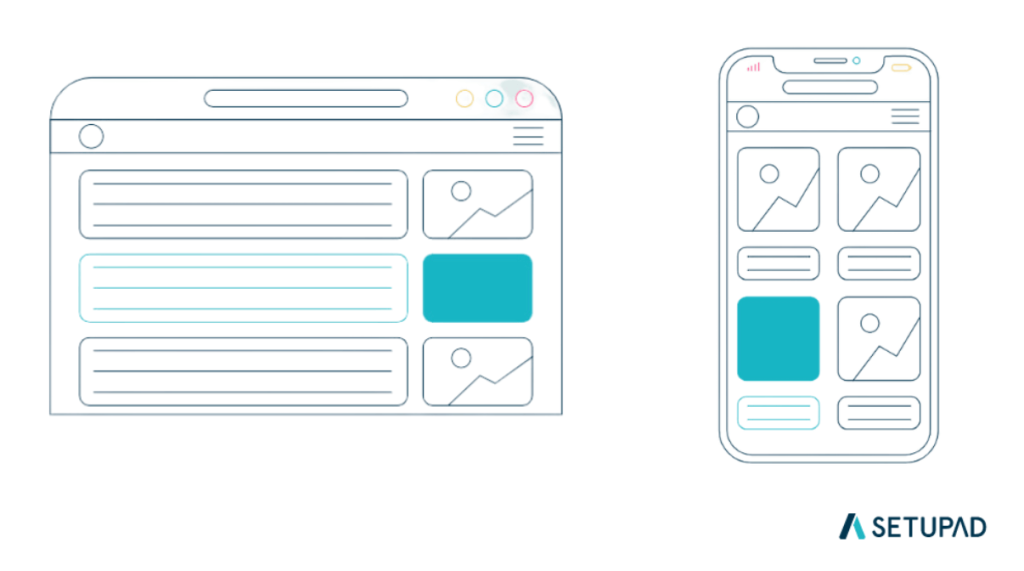
2. Display / Banner Ads
A banner ad is a rectangle-shaped ad that stretches across the screen either vertically or horizontally. It can be displayed at the top, bottom, center, or side of the page.
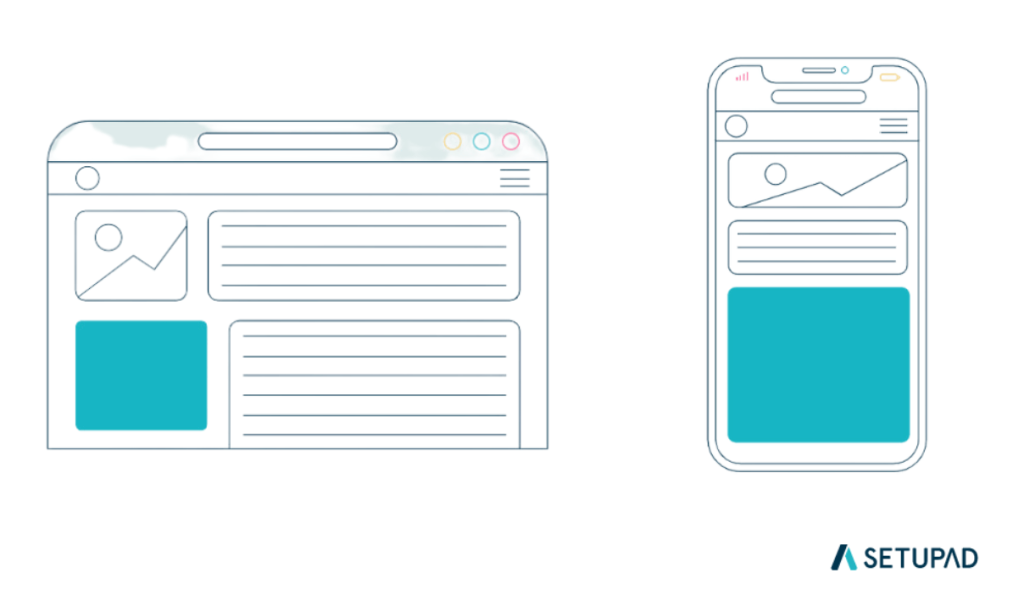
3. Interstitial Ads
Interstitial ads are full-page advertisements that typically appear when you click on a website or a link to a new page within the same site. They have a fixed default frequency cap of one ad per one user in one hour.
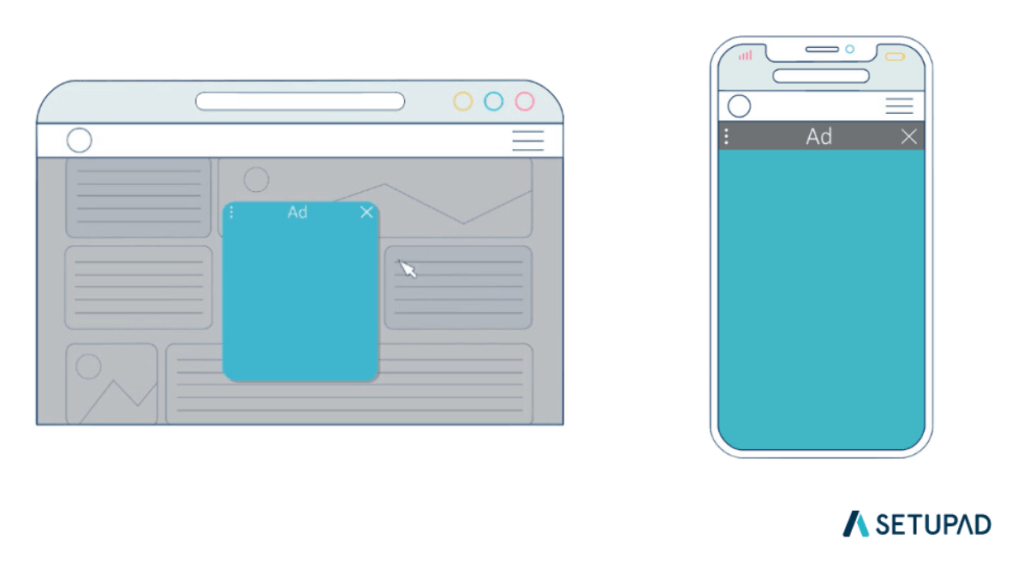
4. Video Ads
Video advertisements are more akin to traditional television commercials. They often start playing automatically as soon as they appear in the bottom right or left corner of a webpage.
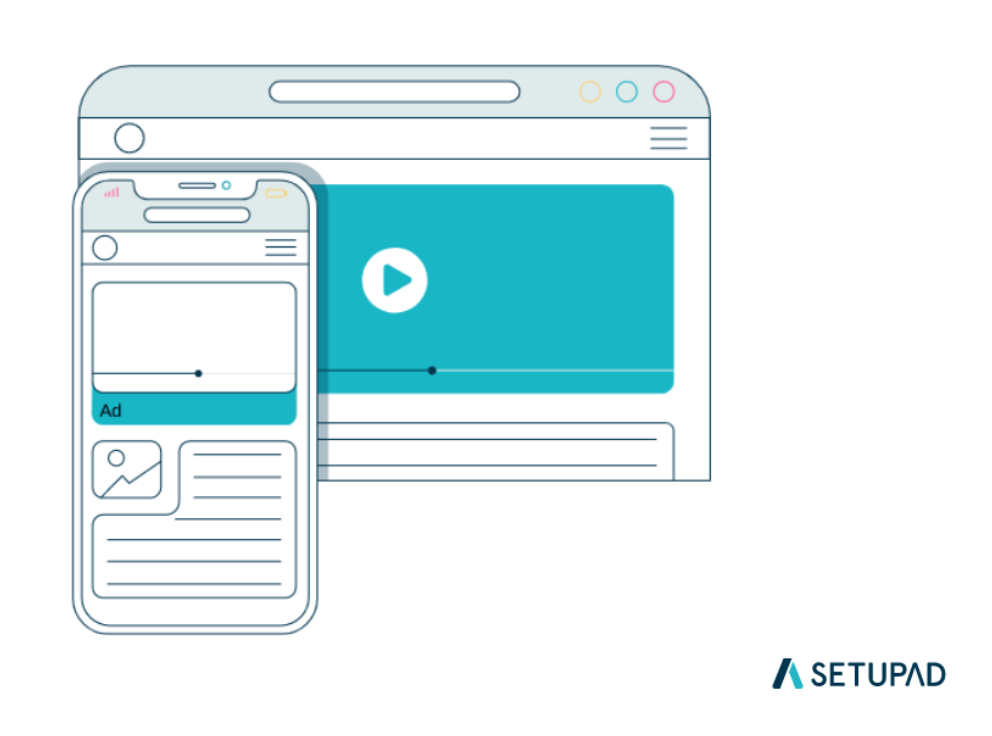
Finally, let’s head to step three.
Step 3: Analyzing and Optimizing Ad Revenue Performance
Analyzing your ad revenue performance enables you to optimize your models as well as play with your maximizing strategies. The ultimate goal with this step is to keep increasing your ad revenue even further.
How to Measure and Track Ad Revenue Performance
Measure and track your ad revenue performance by logging into your advertising platform (many publishers use Google AdSense, and often choose to integrate Google Analytics with Salesforce, or other cloud-based solution, to improve productivity, get data, and automate workflows) and viewing a report of your ad revenue. This report will show a wide array of metrics.
Some key ad revenue metrics that will give you a broad overview of the performance of your ad revenue models are:
- Active view time: the mean amount of time an ad was visible on the screen
- Clicks: the number of times an ad was clicked on
- Cost per click: the amount of money the publisher earns per click on an ad)
- Impressions: the number of times that ad units on a webpage loaded and showed ads to a user
- Impressions CTR: the ratio of user impressions of an ad that ended with a user clicking on it
Pair these metrics with analytics data from your website (e.g., bounce rate, views, etc.) to create a cross-reference library of metrics. Use this library to determine which ad revenue streams are performing well and how you can improve the ones that are lacking based on user experience, content quality, and ad placement and ad format.
For more digital ad metrics to measure, download our resource below:
In Conclusion…
It is possible for publishers to increase their ad revenue by following three steps: understand ad revenue, maximize it, and analyze and optimize the results. This streamlined method will help you cut through all the confusing twists and turns of the ad revenue realm to find the best models and generate the greatest amount of ad revenue for your business.


